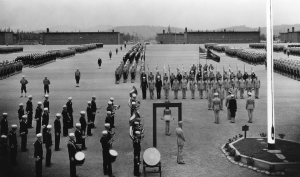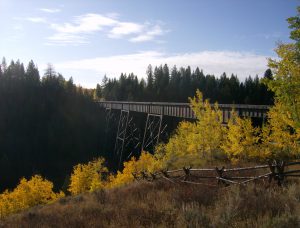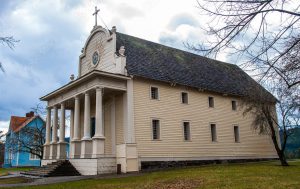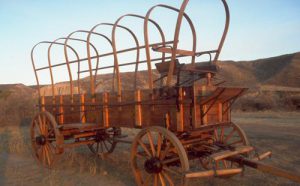Learn Idaho’s Story by Visiting Its State Parks
Idaho State Parks curate the story of how Idaho came to be, showing how those who chose to live here made it the place so many cherish today.
Take a virtual tour of the state’s history by clicking these park links:
- Ashton-to-Tetonia Trail: Built in 1912, the Oregon Short Line
Railroad, a subsidiary of the Union Pacific Railroad, connected the communities of Ashton, Idaho, through Drummond, Lamont, Tetonia, Driggs, and Victor. The abandoned rail line is now the A-T Trail, and the community connections endure.
-
Castle Rocks: Remnants of Native American pictographs, historic trail crossings, and 20th century ranching are visible today.
- City of Rocks National Reserve: The hundreds of pioneer inscriptions, wagon ruts, and journal accounts testifying to the nearly quarter-million people who traveled through here between 1843 and 1882.
- Coeur d’Alene’s Old Mission: The Mission of the Sacred Heart was constructed between 1850 and 1853 by Catholic missionaries and members of the Coeur d’Alene Tribe. It is the oldest building in Idaho.
- Eagle Island: This oasis in urbanizing Ada County used to be Idaho’s prison farm, where for decades trustees engaged in agriculture while working off their debts to society.
- Farragut: The massive World War II training center was briefly Idaho’s largest city by population and continues to tell the story of the country’s war-time mobilization.

- Harriman: The old “Railroad Ranch” once provided refuge to yesterday’s railway and industrial magnates but today is a wildlife refuge that also celebrates the Old West culture.
- Hells Gate: The park lies on river bottom left over from the great ice age floods about 15,000 years ago. The park was once the site of a Nez Perce village and has an extensive display about the Lewis & Clark expedition.
- Heyburn: The Coeur d’ Alene Tribe were the first inhabitants of the area that is now the park. An ideal place for an encampment, the lakes provided an abundance of fish and waterfowl. Much of the early construction was performed by Civilian Conservation Corps (CCC), a Great Depression-era initiative to put people to work doing public service projects.
- Land of the Yankee Fork/Challis Hot Springs: The park brings to life Idaho’s frontier mining history, containing a museum, ghost towns, Native American history, and a historic hot spring built to cater to weary miners.

- Massacre Rocks: The park derived its name from an emigrant wagon party skirmish — debate continues as to the participants and details of the conflict. Register Rock holds the signatures of Oregon Trail emigrants who rested during their journey, and remnants of the Oregon Trail are viewable throughout the park.
- Priest Lake: In 1921, film pioneer Nell Shipman visited the lake for a shoot — and later set up a movie studio on what is today the Lionhead boat launch.
- Thousand Springs: At the park’s Ritter Island unit, the history of dairy pioneer Minnie Miller is preserved and the story of this accomplished woman told. Elsewhere, Oregon Trail sections remain to be explored.
- Three Island Crossing: The famous Snake River crossing on the Oregon Trail was also the most difficult in Idaho. Still, pioneers tried their luck to access the northern route which offered better water and animal feed.
The story of Idaho’s State Parks is a small chapter in the saga of America at its 250th anniversary. Please see the A250 website for all activities associated with this momentous event.





